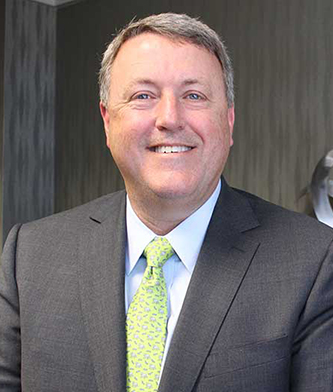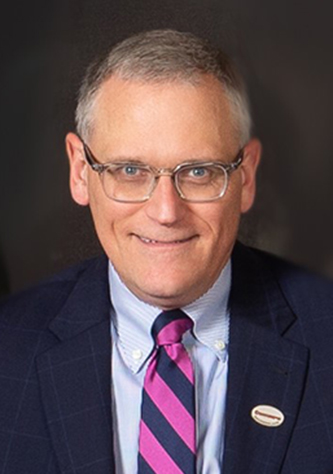YOUNGSTOWN, Ohio – Pleasing customers by providing the technology to make banking easier while making investments in local business communities, community banks strive to provide people with what they want, including maintaining bricks-and-mortar branches.
The president and CEO of Consumers National Bank, Ralph Lober, says being able to provide both the digital technology of bigger banks and the personal service of a local branch is the very definition of community banking.
“We can have 100 branches and if we can’t provide the technology, we’re not going to get the customers,” Lober says. “We can provide all the technology in the world and if we don’t provide local people in these local markets to service the consumer, and more important, the commercial business, the small businesses – if we can’t provide the branch support there, we still won’t get the customer.”
The CEO and president of Premier Bank Corp., Gary Small, agrees there is a continual need to try to balance the importance of both the digital business and the bricks-and-mortar offices.
“We need to meet the customer where that customer wants to do business, not necessarily where it’s convenient for us for the customer to want to do business,” Small says. “As long as we keep our eye on customer preference and providing the tools that make life a little bit easier on everyone and facilitate their day, that’s the winning formula. And I know at our shop, that’s what we’re are committed to doing.”
Making life easier might be part of what attracts customers, those looking to change banks – even those new to using banks.

A survey released in November by the Federal Deposit Insurance Corp. showed only 4.5% of U.S. households were “unbanked” in 2021, which means no one in those households had a checking or savings account at a bank or credit union. The 4.5% mark is the lowest since the FDIC began its surveys in 2009 and the number has dropped 3.7 percentage points or by five million households since 2011. The FDIC survey showed 3.5% of households in Ohio were unbanked in 2021 and only 2.6% in Pennsylvania.
The FDIC survey noted that a third of those who opened a bank account since March 2020 attributed receiving government benefit payments because of the pandemic as the reason for doing so.
Kevin Helmick, president and CEO at Farmers National Bank, says Farmers has seen an increase in customers who use technology to do their banking since the pandemic. Its own survey, though, shows people still want a site to do their banking.
“We want branches where we can walk in. We just never want to have to,” Helmick says in describing people’s attitudes. While it no longer makes sense to have the large bank buildings of 50 years ago, smaller, properly staffed branches make sense, he says.
Lober agrees that consumers and businesses looking to change banks or open a new account might research the features of various banking services online. When it comes to opening an account, though, most still want to walk into a branch.
“They might never come into a branch or come in once a year. But they want to know that it’s there, Lober says, “that there’s somebody behind them, that if they have an issue they can come into a local branch.”
While banks like Farmers continue to expand through mergers and acquisitions, that is only one way that community banks expand their footprints.
Consumers Bank plans to open a loan center for mortgage, commercial and installment loans, which is something that Lober says the bank will report more about before the year ends.
Premier plans to open a couple of new locations this upcoming year with Small noting if a bank wants to expand into a new market, people still want a branch there.
New Ways to Bank Electronically
Although different from staffing the banking location with people, Interactive Teller Machines (ITMs) at Farmers Bank give customers access to a person who can answer their questions. Situated inside a branch or its drive-thru, the device allows the customer to speak to a bank teller face-to-screen.
These ITMs, or lab branches, according to Helmick, were created in the last three years to give Farmers customers easy answers regarding the use of the machine and other banking concerns – even how to obtain a loan.

In addition, Farmers has expanded its array of services by providing more wealth management offerings to include giving its customers services for estate planning, retirement accounts, insurance and trusts.
“You know people like to deal with the bank that they know and trust,” Helmick says. Some wealth management offerings are fee-based instead of interest-based, which is good for the bank’s margins when interest rates have been so unpredictable this year. “So it’s kind of a win-win: It’s great for the customer because they understand who they are dealing with and we can get them these products and it’s good for the bank as well.”
Small agrees there are those who want mostly digital transactions, but even those people have times when they want face-to-face interaction. “That consultant piece, that’s where there really is a bias toward talking with folks and that’s where we still add a lot of value to the equation,” Small says.
Investing heavily in technology goes back to the ATM. It now includes online banking and apps. As technology and services grow, Small says, Premier has added onto what it offers without removing any services. Most people want to be able to engage with the bank in several ways instead of just one.
Many customers today expect to be able to check their balances, deposit their checks, transfer money between accounts and pay a bill, all while sitting at their kitchen tables on a Sunday afternoon, the bankers agree.
“Banking mobility is very important for customers,” Helmick says. “It’s enabling them to bank where they are.”
The American Bankers Association released a report in October that shows consumers give high marks to digital banking with 99% rating their banks’ online and mobile app products as excellent, very good or good. Of those surveyed, 84% stated tech improvements by banks make it easier for consumers to access their financial services. In addition, eight in 10 have used a mobile device in the past month to access their accounts, including 92% of adults ages 18 through 34.
Before 2017, Small says the ABA reported that only 17% had used some form of digital banking. Now the younger people opening accounts start by conducting their banking business online or from a mobile device.
In keeping up with those expectations, Premier Bank is planning to upgrade its mobile and online experiences over the next three or four months, providing more seamless capabilities between them and more of the services people expect.
More people pay bills through their mobile devices, setting up online payments and even sending money to friends electronically, Small notes.
Fewer use ATMs than in the past because fewer people carry cash. According to a 2022 Pew Research Center survey, about four in 10 Americans report they pay for none of their purchases in a typical week in cash, up from 29% in 2018 and 24% in 2015. Only 14% claim to use cash for all or nearly all purchases.
“It’s convenient,” Small says. “There’s just less and less that you need to do at an ATM versus why you used to go there. Because you just use your debit card.”
Digital Security
But with all these digital services come concerns of cyber attacks and phishing.
Consumers National Bank recently invested more than $400,000 in technology upgrades to firewalls and other protections for business and consumer accounts, according to Lober.
Both Premier and Farmers Bank presidents agree security is a big priority.
“It’s the price of admission,” Small says, noting costs for digital security can be offset by what banks once spent to protect against traditional losses. “It’s still worth it to spend money and resources [on cyber security] because it allows us to spend less money in cash handling areas.”

But all three bank CEOs agree that no matter how much security is put in place, consumers must remain vigilant in helping their banks to protect their assets.
Helmick says Farmers cautions customers and disseminates information anytime it sees an uptick in spam phone calls, texts, phishing and vishing attacks – any of the various ways unscrupulous people attempt to get their customers’ information.
Lober cautions the bank will never call and ask you for your passwords. But even as all banks emphasize that, someone somewhere will lower his guard and provide it anyway.
“The fraudsters, they work overtime to try to find ways to trip the customer,” Lober says. “We can quadruple our investment in security on our side. If the customer gives away their data, their codes, we can’t stop it.”
Lober says banks continue to get more sophisticated in protecting money, asking for dual factor authentication, flagging an account when someone attempts to log onto it from another computer or location and reducing the number of transactions allowed per day.
“Together we have to make it less lucrative for the fraud enterprise,” Lober says. “We have to make it harder. If they want to get the same amount of money, they’ve got to do twice the amount of work basically.”
